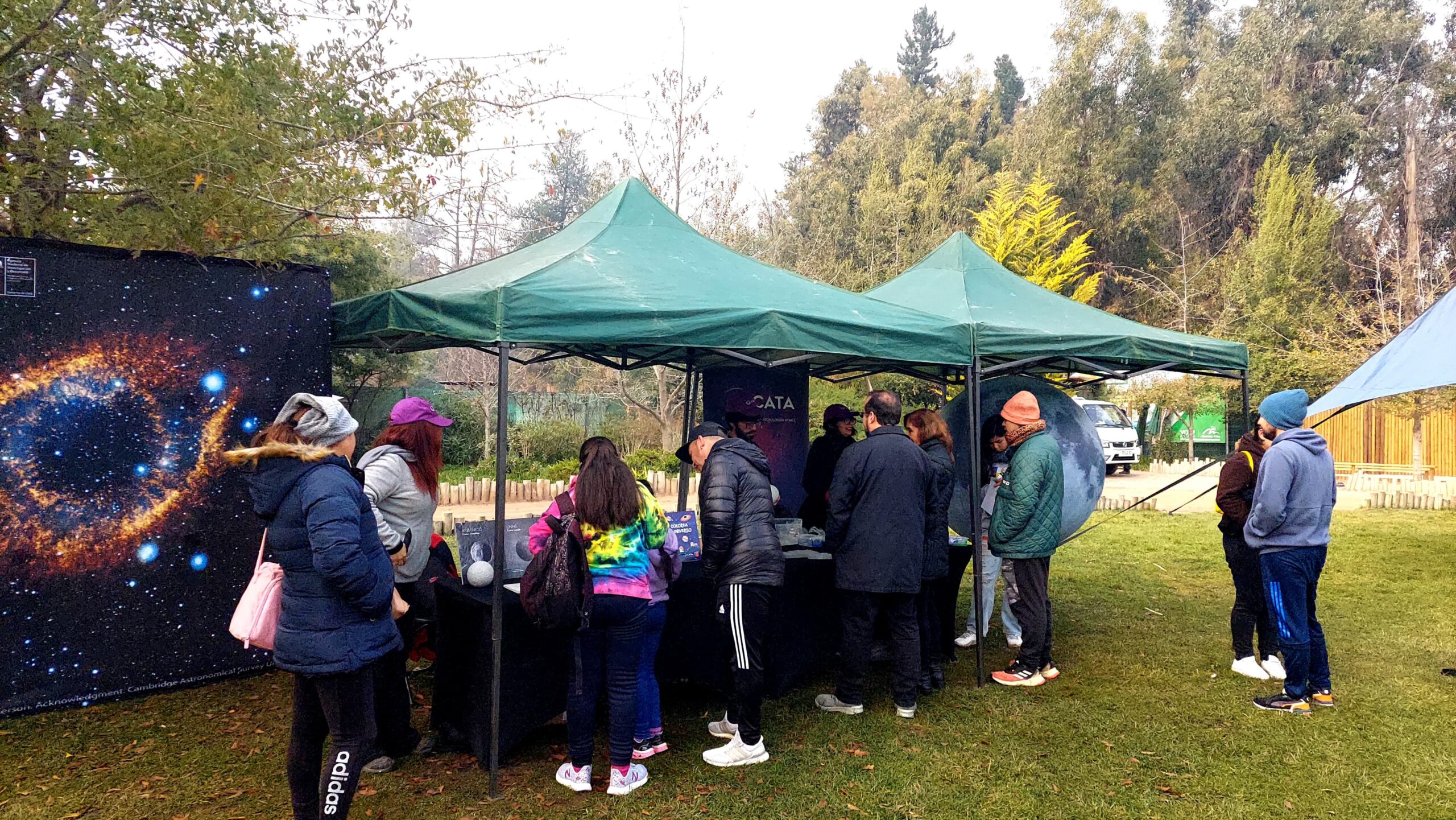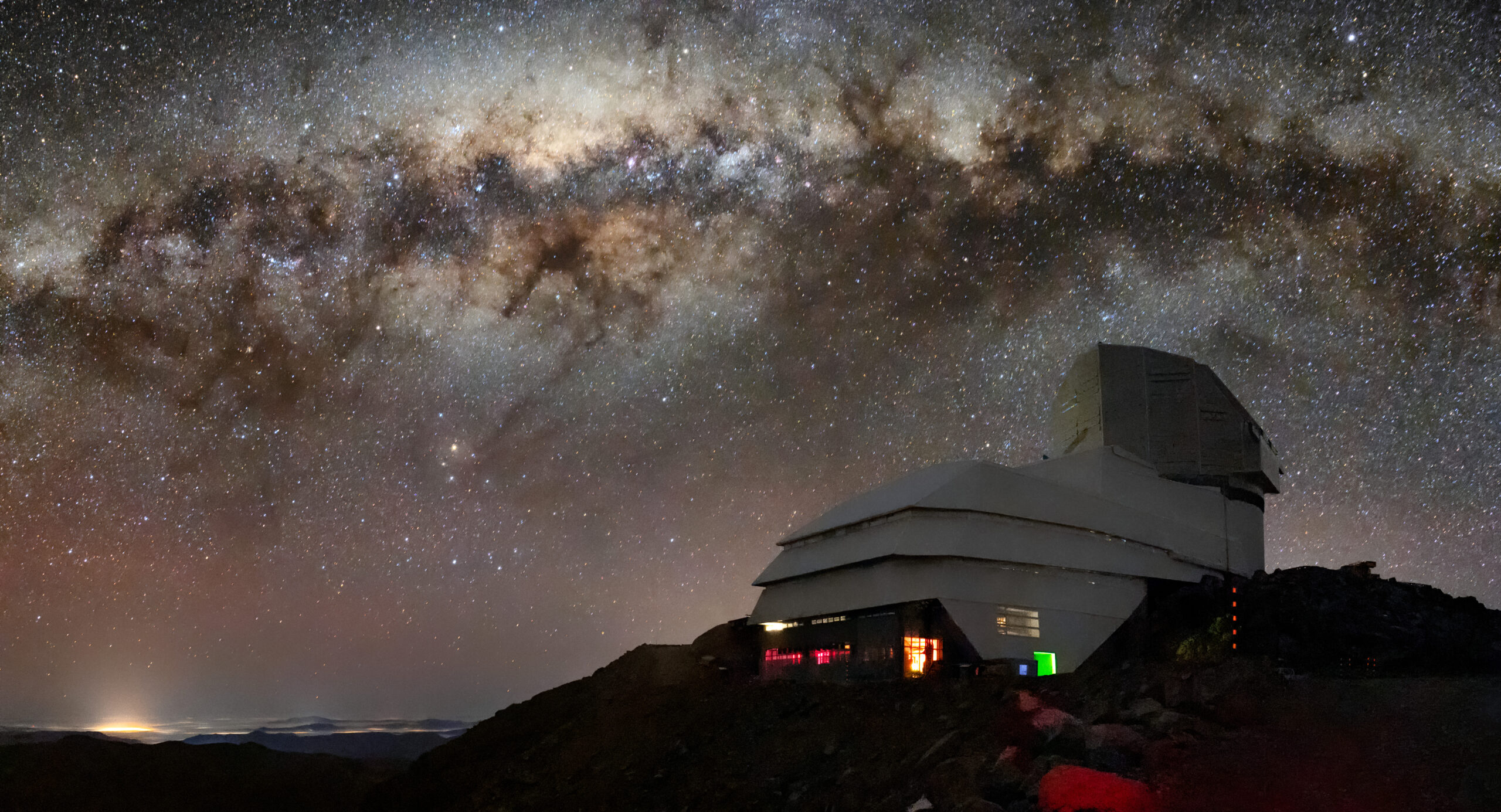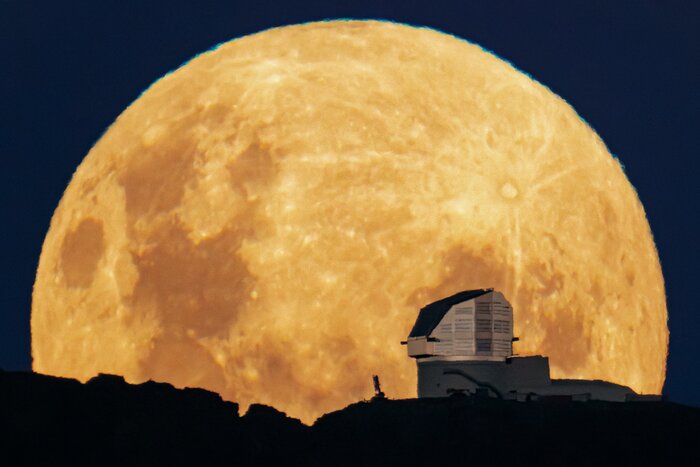
The largest infrared map of our galaxy is obtained in Chile
It involved more than 13 years of observations during 420 nights, where about 200 thousand images were obtained, monitoring more than 1.5 billion objects and generating about 500 TB of scientific data. The projects in charge were led by CATA Principal Investigator Dante Minniti.
When carrying out specific astronomical research, scientists also need to have a basis on which to base their studies.
Hence the importance of the mega-projects “Variables VISTA in the Milky Way” (VVV) and its complement VVV eXtended (VVVX), which after 13 years of observation of the central regions of our galaxy completed the largest infrared map of the Milky Way.
These results were highlighted in a paper in the prestigious European journal Astronomy Astrophysics. “At the beginning it was an adventure to embark on this great experiment that was a gigantic task, being then the largest observational project in data volume of the European Southern Observatory (ESO), in charge of carrying out the work with the VISTA telescope, located at the ESO Paranal Observatory in the Norte Grande of Chile”, explains Dante Minniti, Principal Investigator of the Center for Astrophysics and Related Technologies (CATA) and astronomer of the Andrés Bello University (UNAB), who led these investigations.
These initiatives were activated in 2005 and, after generating the appropriate conditions and protocols, the observations began in 2010 to be completed in the first half of 2023. They achieved, in a total of 420 nights, about 200 thousand images, monitoring more than 1.5 billion objects and generating about 500 TB of scientific data, whose analysis was performed by 146 scientists, from 15 different countries, in four different countries.
“Our survey is revolutionary because it uses an infrared (IR) telescope and is therefore highly complementary to observations from other optical telescopes. In particular, in the IR you can penetrate the dense clouds of dust and gas in the galactic plane, allowing you to see what’s behind it. It’s like having a camera that can see seamlessly through fog. This gigantic database opens up a range of possibilities for future investigations, both of the solar system, exoplanets, stars and clusters in our galaxy, and also much more distant galaxies and quasars,” adds Dante Minniti.
This is a public ESO catalog, whose data can be freely used by the entire astronomical community for different types of research. And already, during data processing, it has generated countless applications in the study of galactic structure, stellar populations, variable stars, star clusters and much more.
The team that participated was a pioneer in developing different topics that are now in vogue such as big data, machine learning, neural networks, automatic classifiers, artificial intelligence, etc.
Among the participants in the research were also CATA researchers Claudio Cáceres, Bruno Dias and Daniela Rojas, who also work at UNAB.
In this VVV and VVVX research process, CATA played a very relevant role according to the Center’s Principal Investigator Dante Minniti.
“It has been instrumental from the beginning, we have the support for our students, postdocs and professors, and to disseminate our work in the world. There are few areas where we can be leaders, and having completed this megaproject shows that this is one of them. In addition, CATA benefits, because we have this data first hand, as a priority to extend observations, important thesis topics for students and, of course, to be able to make more discoveries.”
They have already produced more than 300 scientific publications and also 30 PhD theses in South America and Europe. The image processing, data analysis and scientific exploration will continue for many years to come, with countless discoveries to come. This work leaves a lasting legacy for the astronomical community, which will continue to use this information in various projects. Many of these studies will be supplemented for better understanding with future observations using NASA’s Nancy Grace Roman Space Telescope, which will be launched in late 2026.
Recent news
-
 Publicado el: 04/07/2025CATA researchers among the best in Chile according to international ranking Research.com
Publicado el: 04/07/2025CATA researchers among the best in Chile according to international ranking Research.com -
 Publicado el: 30/06/2025CATA Director strengthens ties in her second institutional tour
Publicado el: 30/06/2025CATA Director strengthens ties in her second institutional tour -
 Publicado el: 30/06/2025CATA celebrated Asteroid Day 2025 at the Pueblito de Las Vizcachas Park
Publicado el: 30/06/2025CATA celebrated Asteroid Day 2025 at the Pueblito de Las Vizcachas Park -
 Publicado el: 26/06/2025Vera C. Rubin: the telescope that watches the sky and anticipates the future of astronomy
Publicado el: 26/06/2025Vera C. Rubin: the telescope that watches the sky and anticipates the future of astronomy -
 Publicado el: 25/06/2025CATA researchers appointed as Full Professors at Universidad Andrés Bello
Publicado el: 25/06/2025CATA researchers appointed as Full Professors at Universidad Andrés Bello
Categories list
- Acknowledgments 19
- Astrobiology 5
- AstroCluster 1
- Black holes 13
- Corporativo 49
- Cosmology 4
- Descubrimientos 19
- Disclosure 46
- Exoplanets 13
- Extension 4
- Galaxies 17
- Galaxies formation 2
- Inter y Transdisciplina 2
- Local Universe 13
- Publications 5
- Sin categorizar 31
- Solar System 11
- Stellar formation 6
- Technology 9
- Technology Transfer 12


